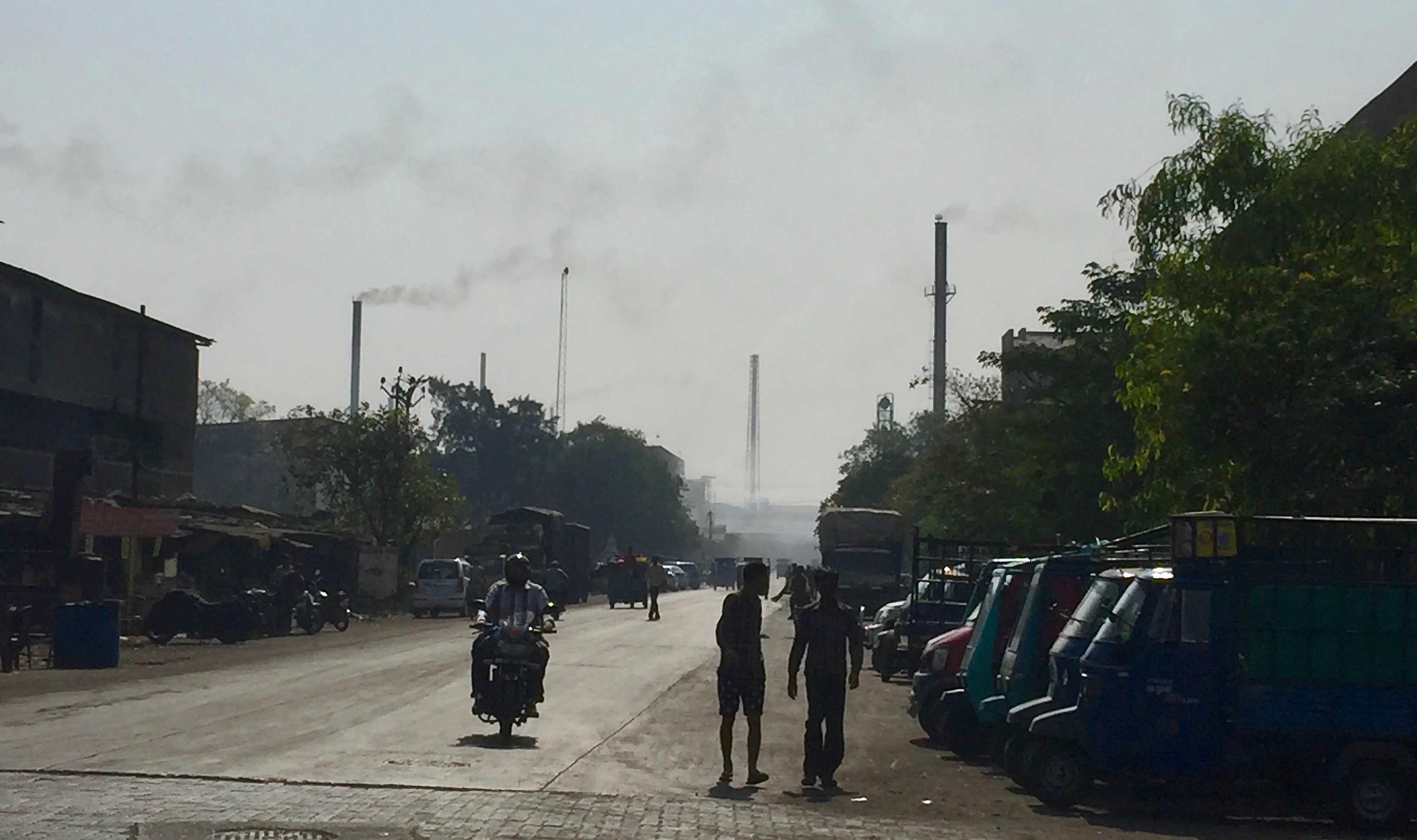India Launches World's First Particulate Emission Trading
The pilot program is the product of a policy-research collaboration that includes Inclusion Economics, and may serve as a model for the rest of India and the world as a means of reducing air pollution and facilitating robust economic growth.

Rohini Pande spoke to an audience of thousands of industry leaders, academics, and policymakers at the June 5, 2019 launch.
Originally published by Evidence for Policy Design, June 6, 2019.
The Indian state of Gujarat has launched the world’s first emissions trading system for particulate pollution, in a collaboration with researchers from Harvard Kennedy School, Yale, the Energy Policy Institute at the University of Chicago (EPIC), and The Abdul Latif Jameel Poverty Action Lab (J-PAL). The launch took place on World Environment Day, June 5, at an event was hosted by the Chief Minister of Gujarat State, Shri Vijay Rupani, and attended by over 3000 people from industry, academia, and the government.
The pilot trading program is a market-based system where the government sets a cap on emissions and allows industries to buy and sell permits to stay below the cap, similar to the policy that successfully reduced the effects of acid rain in the United States in the 1990s. It is being initiated in the city of Surat, a densely populated industrial center where textile and dye mills release a significant amount of air pollution. As the first market-based approach to regulating pollution emissions in India, it is expected to reduce air pollution at a low cost to both government and industry and provide best practices for replicating trading schemes for other emissions.
Emissions trading can help bring down pollution at a reasonable cost, so this kind of environmental regulation can succeed for regulated plants and for the public." – Nicholas Ryan, Assistant Professor of Economics, Yale University
“With this program, we are kicking off a new era of cleaner production, while lowering industry compliance costs and rewarding plants that cut pollution in low-cost ways,” says Rajiv Kumar Gupta IAS, chairman of the Gujarat Pollution Control Board (GPCB). “We believe using this market-based system will prove that rapid economic growth, ease of doing business, and breathing clean air can all be achieved at the same time.”
The emissions trading program builds on another early innovation by the GPCB, the use of continuous emissions monitoring systems to track industry emissions in real time. About 350 industries around Surat have installed continuous emissions monitoring systems and now transmit real-time, high-quality emissions data. The new scheme takes advantage of this technology’s modern, transparent approach to monitoring.
The GPCB designed the emissions trading program with the help of a team of researchers including Rohini Pande (formerly of Harvard University) and Nicholas Ryan of the Economic Growth Center at Yale University, Michael Greenstone and Anant Sudarshan from the Energy Policy Institute at the University of Chicago (EPIC), and researchers from The Abdul Latif Jameel Poverty Action Lab (J-PAL). The team is evaluating the program’s benefits and costs, relative to the status quo, using a randomized controlled trial.
Of the program, Nicholas Ryan, team member and Assistant Professor of Economics at Yale, says: “Gujarat’s adoption of emissions trading shows great leadership and innovation in environmental regulation. I expect this model of local trading to address local environmental concerns will be widely replicated. Emissions trading can help bring down pollution at a reasonable cost, so this kind of environmental regulation can succeed for regulated plants and for the public.”

An industrial district of Surat, India, where the pilot program seeks to cut levels of harmful particulate air pollution.
Globally, cap-and-trade systems have been used to reduce other forms of pollution, such as programs that have successfully reduced sulfur dioxide (SO2) and nitrogen oxides (NOx) in the United States. But the Gujarat program is the first in the world to regulate particulate air pollution, which is considered the single greatest threat to human health globally. Its effects on life expectancy exceed that of devastating communicable diseases such as tuberculosis and HIV/AIDS, behavioral killers like cigarette smoking, and even war, according to the Air Quality Life Index (AQLI). The AQLI, produced by EPIC, converts particulate air pollution into its impact on life expectancy, and finds that it cuts global life expectancy short by about 2 years.
The history of cap-and-trade programs also reveals that by employing market forces, they greatly reduce the costs that industries incur complying with regulations. Such reductions in compliance costs would facilitate the rapid growth that is the Government of India’s focus.